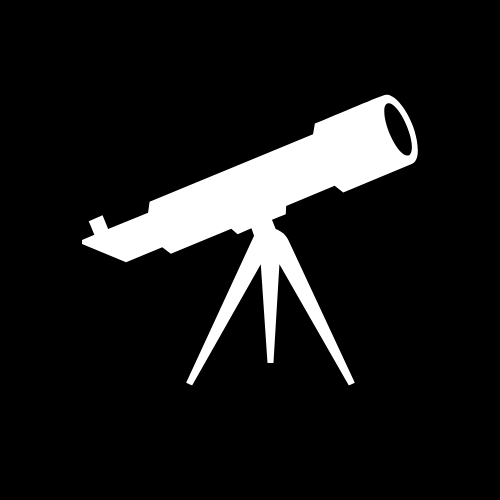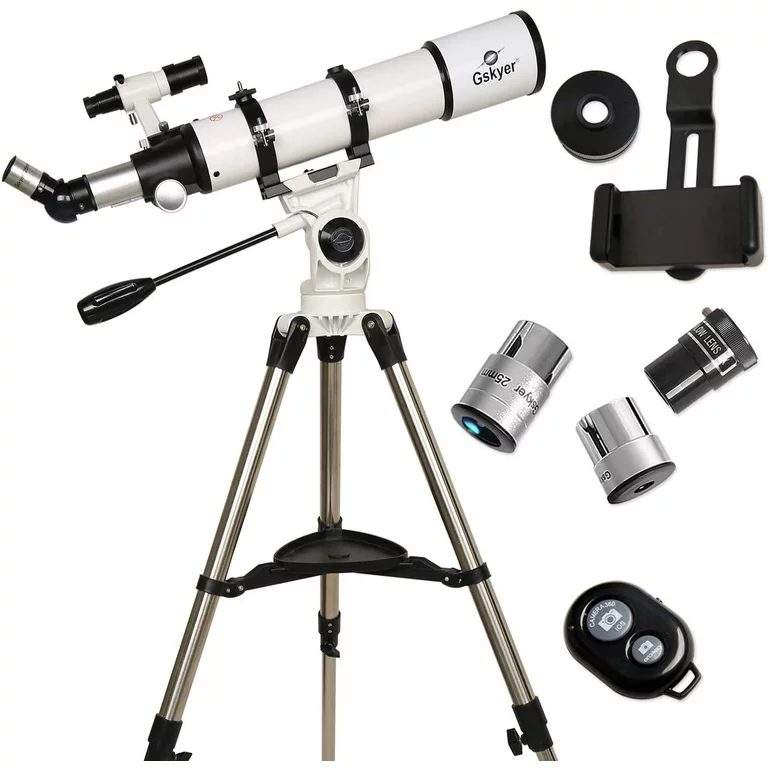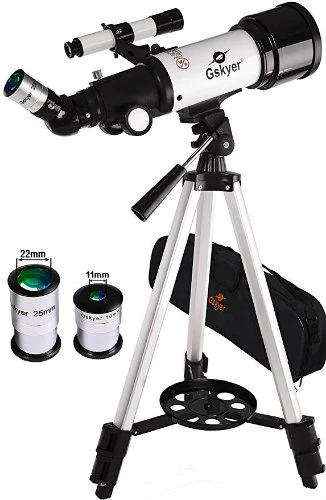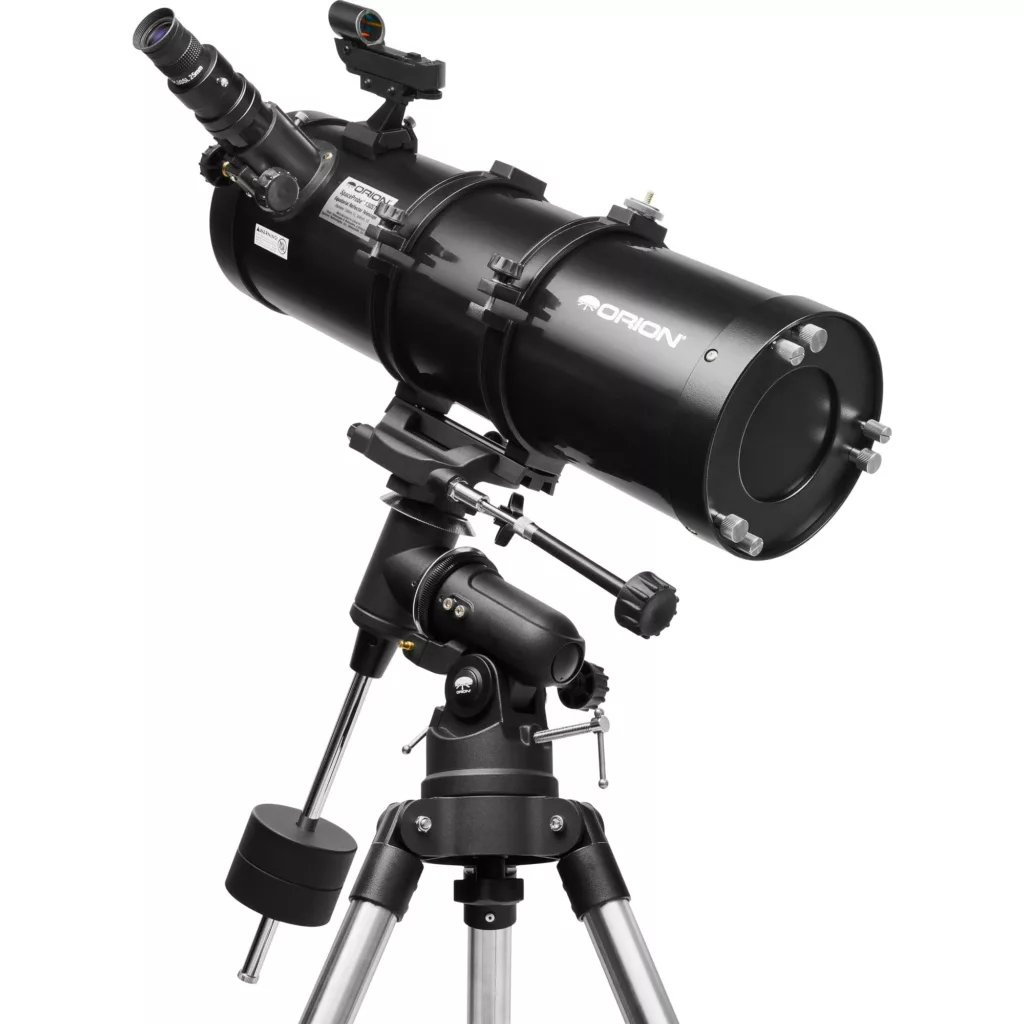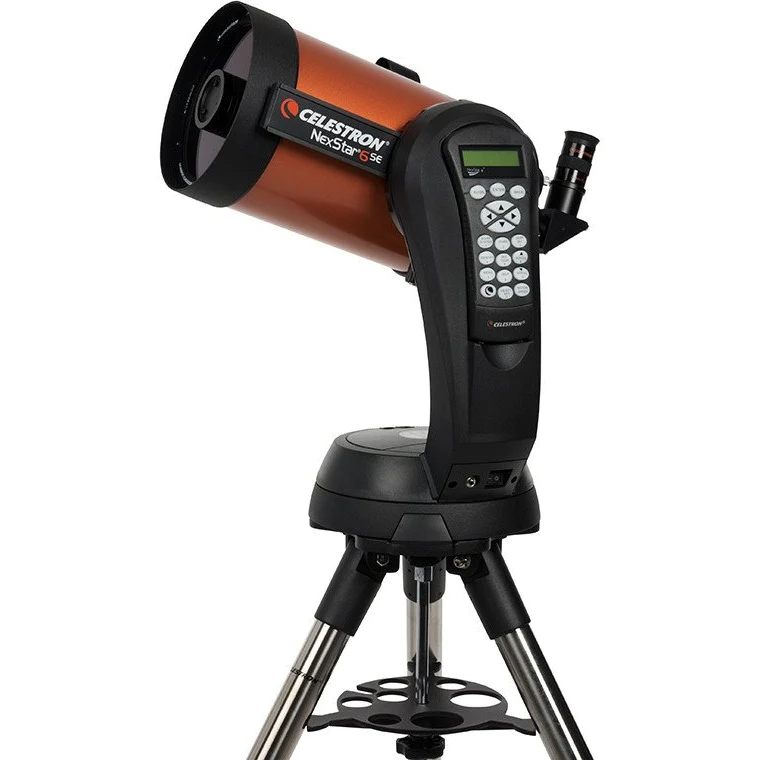Ideal Telescope to Observe Mars
Mars, our enigmatic neighbor in the solar system, has captivated the human imagination for centuries. Glowing like a fiery beacon in the night sky, it invites us to uncover its mysteries. From its towering volcanoes and vast canyons to the tantalizing possibility of past water, Mars offers a unique window into the workings of another world. However, to truly delve into its secrets, the right telescope is not just a tool; it’s the key to unlocking a vivid, detailed view of the Red Planet. This guide is dedicated to helping you select the perfect telescope, turning your gaze towards Mars into a journey of breathtaking discovery and exploration.
Why Mars Fascinates Amateur Astronomers
Mars, often referred to as the Red Planet, holds a special place in the hearts of amateur astronomers. Its allure lies not just in its striking red appearance but also in its unique features and the mysteries it harbors.
Closest Resemblance to Earth
- Similarities to Our Home: Mars is the most Earth-like planet in our solar system, with seasons, polar ice caps, and a day length remarkably close to ours.
The Possibility of Life
- Search for Past Life: Historical evidence suggests Mars may have had water, raising the intriguing possibility of life.
Varied Surface Features
- Diverse Terrain: Mars boasts fascinating geological features, including the largest volcano in the solar system (Olympus Mons) and a canyon system (Valles Marineris) that dwarfs the Grand Canyon.
Visibility and Accessibility
- Favorable Observation Conditions: Mars comes closer to Earth than any other planet except Venus, offering excellent observation opportunities during opposition.
Changing Appearance
- Dynamic Surface: Mars’ surface changes with dust storms and seasonal variations, providing a dynamic viewing experience.
The fascination with Mars stems from its potential to answer profound questions about life in the universe and its accessibility to amateur astronomers. Observing Mars through a telescope offers a glimpse into these mysteries and the planet’s captivating features.
Key Telescope Features for Mars Observation
Observing Mars effectively requires understanding and choosing a telescope with the right features. Here are the key attributes to consider:
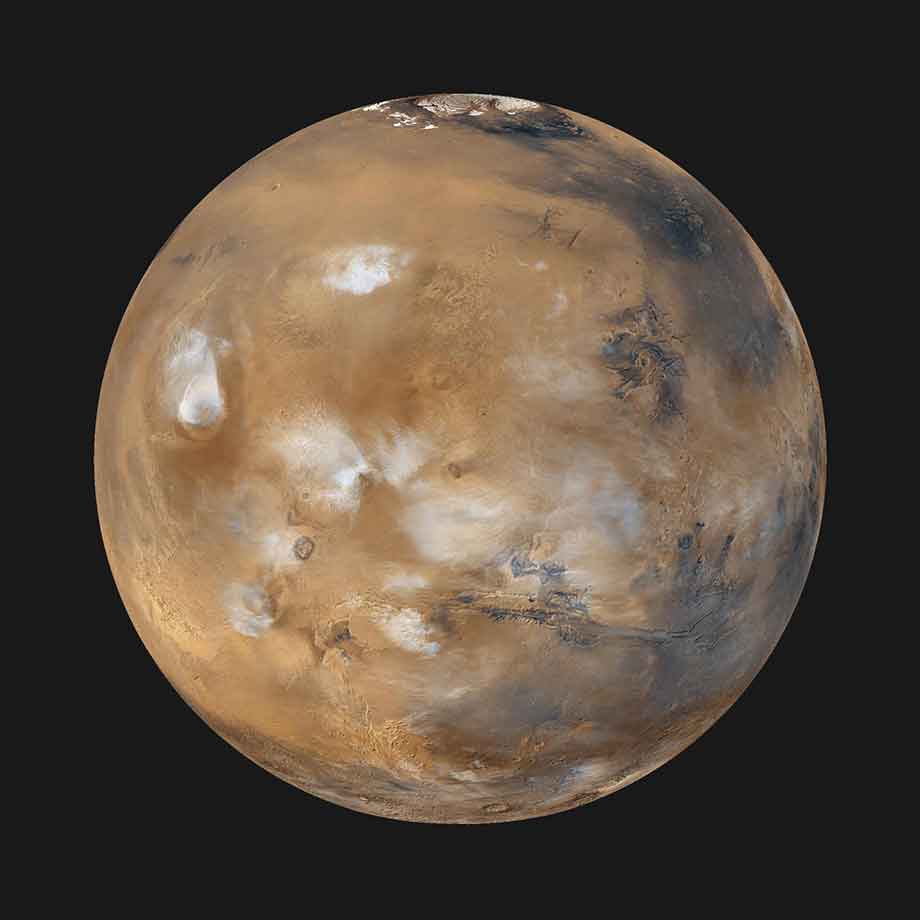
Aperture
- Importance of Size: A larger aperture gathers more light, crucial for seeing details on Mars, especially during its dimmer phases.
Magnification
- High-Power Viewing: Mars is small and often distant, so high magnification is necessary to see surface details like ice caps and dark markings.
- Balancing Magnification and Clarity: However, too high magnification can lead to image degradation, especially under less-than-ideal atmospheric conditions.
Stability
- Sturdy Mount: A stable mount is vital for clear, shake-free viewing, particularly at higher magnifications.
- Tracking Ability: A mount that can track celestial objects smoothly is beneficial for extended observation sessions.
Optical Quality
- Clear and Sharp Images: High-quality optics are crucial for resolving the finer details on Mars.
Focal Length and Ratio
- Long Focal Length: Telescopes with longer focal lengths are better suited for planetary observation, including Mars.
- Focal Ratio: A higher focal ratio (f/10 or more) is preferable for detailed planetary views.
Selecting a telescope with these features enhances your ability to observe and enjoy the subtle details and beauty of Mars.
Top Telescopes for Viewing Mars: Expert Recommendations
When selecting a telescope for Mars observation, these models stand out for their features and user satisfaction:
Gskyer Telescope, 600x90mm AZ Astronomical Refractor Telescope-Best for Beginners
A renowned German brand, this telescope is perfect for beginners and intermediate astronomers. It offers incredible optical power and an easy-to-use design.
| Pros | Cons |
|---|---|
| Multi-coated anti-reflection blue-film | Mostly for beginners |
| Solid stainless-steel tripod | No software for enhanced photography |
| Easy to assemble and use | Difficult to align in light-polluted areas |
| Excellent optics and large aperture | |
| Ideal for beginners |
Gskyer Astronomical Refractor Telescope, Travel Scope, 400mm AZ Mount 70mm Aperture-Best For Young Astronomers
Compact and user-friendly, it features a 70mm aperture and high magnification, perfect for young astronomers and beginners.
| Pros | Cons |
|---|---|
| High Magnification | Chromatic aberration |
| No-tool Set Up | |
| High-Quality Optics | |
| Adjustable Tripod and Carry Bag | |
| 2-years Warranty |
Orion 09007 SpaceProbe 130ST Equatorial Reflector Telescope-Best for travel
This reflector telescope has a 5.1-inch aperture, ideal for both planetary and brighter deep-sky objects. Its portability is a plus for stargazers on the move.
| Pros | Cons |
|---|---|
| Lightweight and portable design | Difficult setup |
| Short optical tube | Complicated instructions |
| Equatorial mount for professional viewing | |
| Fully equipped for astrophotography |
Celestron NexStar 8SE Telescope-Our recommendation
A large aperture Schmidt-Cassegrain telescope, suitable for both beginners and advanced users, featuring automated tracking and a vast celestial database.
| Pros | Cons |
|---|---|
| Great optics | Expensive |
| Automated GoTo mount with 40,000-object database | Plastic accessories |
| Portable and lightweight | Short battery life |
Celestron NexStar 6SE Telescope- Best Price–performance ratio
A compact Schmidt-Cassegrain telescope that blends the best of refractor and reflector features. It includes a computerized system and high-quality lens coatings.
| Pros | Cons |
|---|---|
| High-quality optics | Increasingly costly |
| Portable and easy to set up | Mount prone to vibrations |
| Advanced automated altazimuth mount | Cheap accessories |
Each of these telescopes offers specific advantages for observing Mars, from high-quality optics to advanced tracking systems. Consider your level of experience, budget, and what features are most important to your astronomical journey.
Enhancing Your Martian Experience: Accessories and Gear
To optimize your Mars observation experience, consider these essential accessories:

Filters
- Red and Orange Filters: Enhance Martian surface details, such as dust storms and ice caps.
- Blue and Green Filters: Improve contrast to highlight atmospheric phenomena and cloud patterns.
Eyepieces
- Wide Range of Focal Lengths: A collection ranging from low to high magnification (e.g., 10mm to 25mm) allows diverse views, from wide planetary vistas to detailed surface inspections.
- High-Quality Eyepieces: Invest in well-constructed eyepieces for better image clarity and comfort.
Barlow Lenses
- Magnification Enhancement: A Barlow lens, typically doubling or tripling the effective magnification of your eyepieces, offers an affordable way to vary your viewing magnification without purchasing multiple eyepieces.
Motorized Mounts
- Tracking Enhancement: For longer observation sessions, a motorized mount can keep Mars centered in your view, compensating for the Earth’s rotation.
Astrophotography Equipment
- Cameras and Adapters: Attach a camera to capture images of Mars, using T-rings and adapters suited for your telescope.
Smartphone Adapters
- Casual Astrophotography: For quick snapshots or sharing on social media, smartphone adapters enable easy alignment of your phone’s camera with the eyepiece.
Best Practices for Mars Observation
Observing Mars can be a rewarding experience when done correctly. Here are some tips to enhance your viewing:
Optimal Viewing Times
- Opposition: Mars is closest and brightest when it is in opposition to the Earth. This is the best time for observation.
- Clear Skies: Choose a night with clear, stable atmospheric conditions for the best views.
Telescope Setup
- Proper Alignment: Ensure your telescope is correctly aligned and collimated for optimal image quality.
- Focus: Spend time finely focusing your telescope, as Mars is a small target.
Observational Techniques
- Surface Features: Look for surface markings, such as polar ice caps, dark plains, and dust storms.
- Telescope Adjustments: Adjust magnification and focus as Mars moves or as atmospheric conditions change.
Environmental Factors
- Dark Location: Observing from a place with minimal light pollution will yield better results.
- Patience: Mars may appear as just a bright dot at first glance. Give your eyes time to adjust and details will become more apparent.
Record and Share
- Log Observations: Keep a record of your observations, noting details like the date, time, equipment used, and atmospheric conditions.
- Join Communities: Share your findings with online astronomy communities or local clubs to learn and improve.
Observing Mars requires patience and practice. As you become more familiar with your equipment and the planet’s characteristics, your ability to discern finer details will improve.
Mars Through the Lens: What to Anticipate
When you observe Mars through a telescope, here’s what you can typically expect:
Surface Features
- Polar Ice Caps: Mars’ polar caps are often visible, appearing as bright spots at the poles.
- Dark Markings: Look for dark areas like Syrtis Major; these are vast plains of volcanic rock.
- Seasonal Changes: Depending on the Martian season, you might see changes in the size of the polar caps or dust storms obscuring features.
Color Variations
- Reddish Hue: Mars’ iconic red color, caused by iron oxide, is evident but can vary in intensity.
- Surface Tones: Different regions can show varying shades of brown, ochre, and orange.
Phases and Size
- Apparent Size: Mars appears small, even at opposition. High magnification is needed to see details.
- Phases: Unlike Venus, Mars does not show phases; it’s either fully or nearly fully illuminated.
Moons
- Phobos and Deimos: Mars’ small moons are challenging to spot and typically require a large telescope and excellent viewing conditions.
Viewing Mars offers a unique experience each time, with the potential to see different aspects depending on the telescope used, the planet’s position, and atmospheric conditions.
Joining the Community: Resources and Sharing
Engaging with the wider astronomy community can greatly enhance your Mars observation experience. Here are some resources for connection and sharing:
Online Forums and Astronomy Clubs
- Cloudy Nights: A popular online forum for astronomers of all levels.
- Local Clubs: Local astronomy clubs offer events, star parties, and a platform to share experiences.
Mobile Apps
- Stellarium: A user-friendly app for star mapping and celestial event tracking.
- SkyView: Great for identifying planets and stars in the night sky.
Social Media Groups
- Facebook Astronomy Groups: Communities like ‘Amateur Astronomy’ and ‘Planetary Science’ for sharing observations and tips.
- Reddit: Subreddits like r/Astronomy provide valuable information and a platform for discussion.
Educational Websites
- NASA’s Mars Exploration Program: Offers in-depth information about Mars.
- Space.com: Provides news and updates on celestial events including Mars viewing opportunities.
Image Sharing Platforms
- AstroBin: A platform dedicated to sharing astrophotography, including images of Mars.
